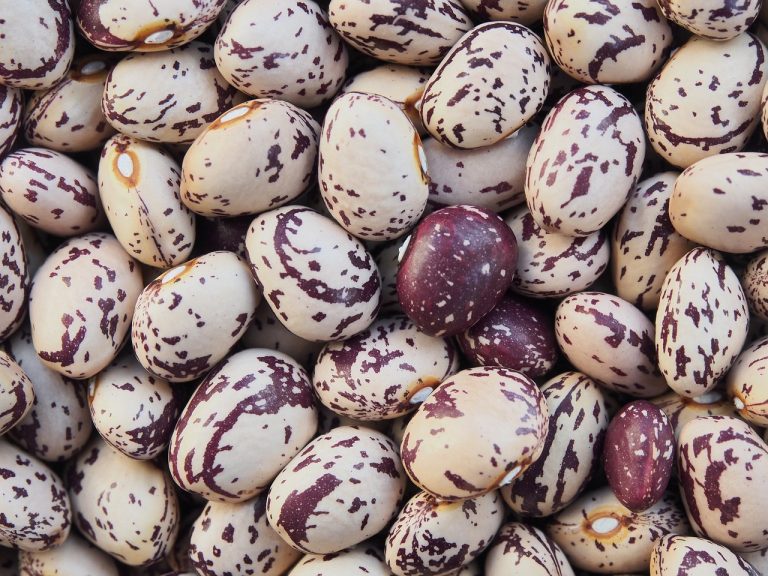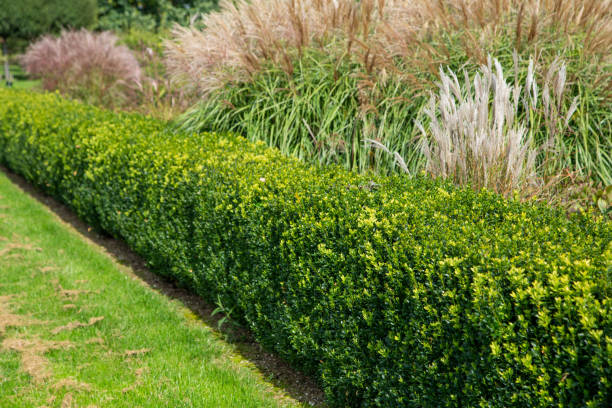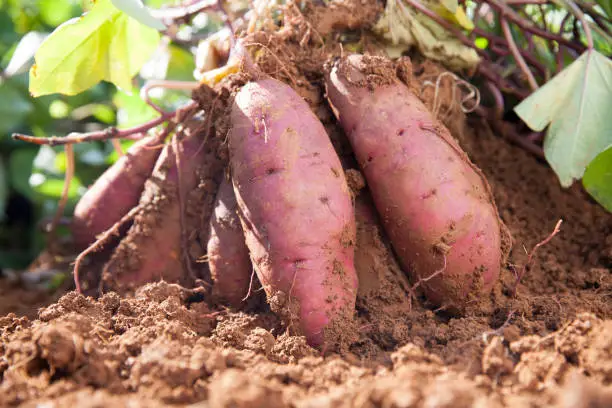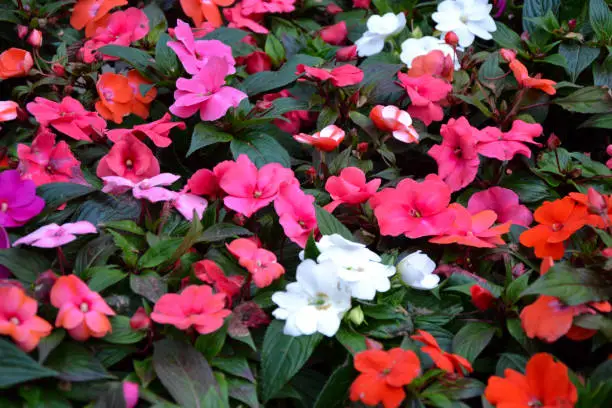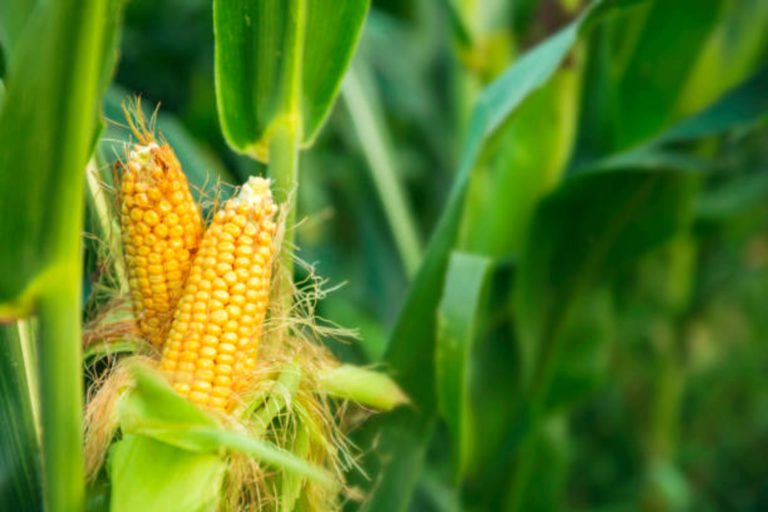What is mulch and mulching in the garden? 2 best types
Mulch is your protective layer of natural materials not only keeps your plants cosy, but also battles weeds, saves water, and adds a touch of elegance to your green paradise. Discover the secret weapon for a thriving, low-maintenance garden it’s mulch magic.
What is mulch and mulching in the garden?
Mulch is a layer of material, such as wood chips, leaves, straw, or plastic, spread over the soil’s surface in gardens and landscaping. It helps conserve moisture, suppress weeds, regulate soil temperature, and improve overall soil health.
The word “mulch” has its origin in the Germanic languages. It can be traced back to the Middle English word “molsh,” which means “soft” or “pulpy,” Over time, it evolved to refer specifically to the organic material used to cover soil for various benefits in gardening and agriculture.
Mulching is the practice of applying a protective layer of material, such as wood chips, leaves, straw, or other substances, onto the surface of the soil in gardens, landscapes, or around plants.
The primary purposes of mulching are to conserve moisture, suppress weed growth, regulate soil temperature, reduce erosion, and improve the overall health and appearance of the area where it is applied.
Mulch serves as a barrier between the soil and the environment, providing several benefits for plant growth and garden maintenance.
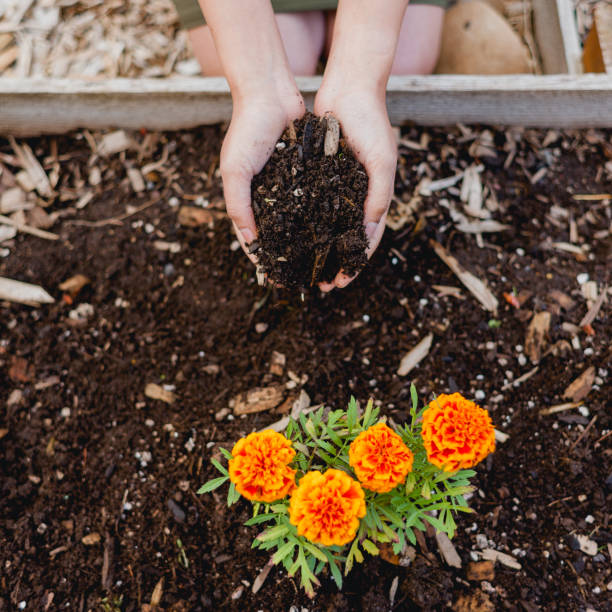
Types of mulching:
There are two main types of mulching:
Organic Mulch:
This type of mulch is made from natural materials like wood chips, straw, leaves, compost, or pine needles. Organic mulch breaks down over time, adding nutrients to the soil and improving its structure. It’s excellent for enhancing soil health and moisture retention.
Inorganic Mulch:
Inorganic mulch is made from materials that do not decompose quickly, such as landscape fabric, plastic sheeting, or gravel. These materials are used to suppress weeds and conserve moisture without adding organic matter to the soil. Inorganic mulches are often chosen for their durability and low maintenance.
Benefits of mulching:
Mulching offers several benefits in gardening and landscaping:
Moisture Conservation:
Mulch helps retain soil moisture by reducing evaporation, which is especially important during hot and dry periods.
Weed Suppression:
A layer of mulch prevents weed growth by blocking sunlight and inhibiting weed seed germination.
Soil Temperature Regulation:
Mulch acts as insulation, keeping soil temperatures more stable. It helps to keep the soil cooler in hot weather and warmer in cold weather.
Soil Erosion Prevention:
Mulch protects the soil from erosion caused by heavy rain or wind, maintaining soil structure and preventing nutrient loss.
Improved Soil Health:
Organic mulches break down over time, adding valuable organic matter to the soil, which enhances its fertility and structure.
Pest Control:
Some mulch types, like cedar or cypress, may deter certain pests and insects from infesting plants.
Enhanced Aesthetic Appeal:
Mulch gives a neat, finished look to garden beds and landscaping while reducing mud and dust.
Root Protection:
Mulch cushions the soil, reducing compaction and the risk of root damage from foot traffic or lawnmowers.
Disease Prevention:
Mulch can help prevent soil-borne diseases by acting as a barrier between the soil and plant foliage.
Time and Labor Savings:
By reducing the need for weeding, watering, and soil maintenance, mulching can save time and effort in garden care.
Method of applying mulch:
To apply mulch effectively, follow these steps:
Prepare the Area:
Weed the area and remove any debris from the soil surface.
Choose the Mulch:
Select the type of mulch (organic or inorganic) that suits your needs and aesthetics.
Calculate the Amount:
Determine how much mulch you need by measuring the area’s length and width in square feet and the desired depth in inches. Typically, 2-4 inches of mulch is recommended.
Edge the Area:
If desired, install edging or create a clean edge around the planting bed to contain the mulch and prevent it from spreading.
Apply Mulch:
Spread the mulch evenly over the prepared area, making sure not to pile it too high around the base of plants or trees (leave a mulch-free “doughnut” around them to prevent rot).
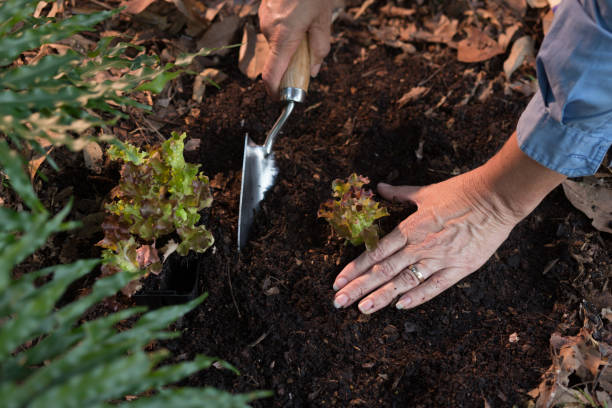
Smooth and Level:
Use a rake or your hands to smooth and level the mulch, ensuring an even layer.
Water:
Water the mulch lightly to help it settle and make good contact with the soil.
Reapply as Needed:
Over time, mulch may break down or get thinner. Reapply mulch as necessary to maintain the desired depth and benefits.
Frequently Asked Questions
When to apply mulch?
Apply mulch in late spring or early summer, once the soil has warmed up, but before the hottest part of the summer. This timing helps conserve moisture, suppress weeds, and regulate soil temperature effectively.
Why should I use mulch in my garden?
Mulch helps retain soil moisture, reduce weed growth, regulate soil temperature, prevent soil erosion, and improve the overall appearance of your garden.
What types of mulch are available?
There are various types of mulch, including organic mulch (e.g., wood chips, bark, straw) and inorganic mulch (e.g., gravel, rubber mulch). Each type has its advantages
How deep should I apply mulch?
A layer of mulch 2 to 4 inches thick is generally recommended. Thicker mulch may prevent water from reaching plant roots, while thinner mulch may not provide adequate weed suppression or moisture retention.
When is the best time to apply mulch?
Mulch can be applied in the spring or fall. Spring mulching helps retain soil moisture and suppress weeds, while fall mulching helps insulate soil and protect it from winter temperature fluctuations.
Should I remove the old mulch before applying new mulch?
It’s a good practice to remove some of the old mulch before applying a fresh layer to prevent excessive buildup, which can lead to issues like reduced water penetration and root problems.
Can I use mulch around trees and shrubs?
Yes, mulch is beneficial around trees and shrubs. It helps retain moisture, reduce competition from weeds, and protect the roots from temperature extremes.
Is mulch safe for my plants and the environment?
Mulch is generally safe, but you should choose mulch from reputable sources to avoid introducing pests or diseases. Organic mulch is eco-friendly, while some inorganic mulches can have drawbacks.
How often should I replenish mulch in my garden?
Mulch may need replenishing annually or every other year, as it breaks down over time. The timing can vary depending on the type of mulch and environmental factors.
Conclusion:
In conclusion, mulch and mulching are the unsung heroes of gardening, providing a range of benefits that go beyond the aesthetic appeal. By offering protection, moisture retention, weed suppression, and temperature regulation, mulch simplifies garden maintenance while promoting healthier, more vibrant plants.
Whether you’re a seasoned gardener or just starting, integrating mulch into your gardening routine can make a world of difference. So, embrace the beauty and functionality of mulch, and watch your garden thrive with less effort, leaving you more time to enjoy the fruits of your labour.
